Sabie River Gorge Power Station
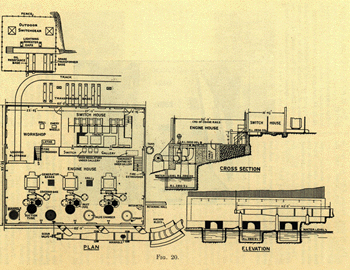
However, with the discovery of gold at Pilgrim’s Rest that same year, followed by discoveries at Barberton in 1884 and on the Witwatersrand in 1886, most prospectors left the Sabie area. Glynn continued his search, until a reef was discovered in 1897, later known as the Glynn’s Lydenburg mine. Between May 1897 and July 1950 3 427 784 tons of ore was mined, 1 240 646 ounce of gold produced and a profit of R4 234 664 was made.
From 1881 established companies, the most notable being Transvaal Gold Mining Estates, Ltd. (TGME) and Messrs. Glynn’s Lydenburg Ltd., took over the mines and converted from alluvial mining to reef mining. Small operators also continued mining and even after the First World War (1914-1918) a number of small mines were still operating in the district.
FOUNDING OF SABIE RIVER GORGE POWER STATION
Repeated representations were made to the Government to establish a power station that would cater for the growing needs of the numerous small mines. A Government Departmental Committee was formed in 1920 to look into the matter and shortly after the establishment of the Electricity Supply Commission in 1923, the matter was referred to the Commission as one of urgency. The establishment of a power station at Sabie was one of the first projects undertaken by the Commission.
On 7 August 1923 members of the Commission visited the Sabie District to investigate the different proposals which had been made over the years and also to hear the views of the local community on the power situation. Survey work to establish a hydro-electric power station in the Sabie Valley, at a place known as “the inaccessible gorge”, was started shortly afterwards.
When construction work was ready to start, the mines found that their power requirements were likely to be considerably less than first estimated, and the scheme had to be reconsidered. Because the mining industry could not give a guarantee of a possible future load, the Commission had to abandon the larger scheme in favor of a smaller operation. A site closer to Sabie had to be found in order to cheapen the cost of transmission. Survey work started in June 1924 on the farm Bergvliet 692, 14 km down stream from Sabie on the Sabie River. Early in 1925, tenders were invited for the supply and construction of the plant. On 5 June 1925 a permit was obtained from the Electricity Control Board for the establishment of a hydro-electric undertaking in the Sabie District and an application was made to the Water Court for the necessary water rights on the Sabie River.
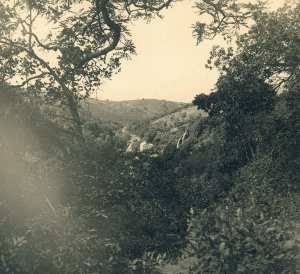
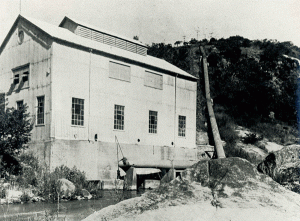
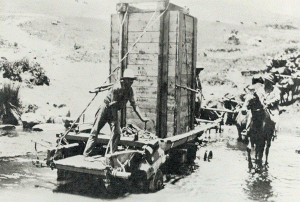
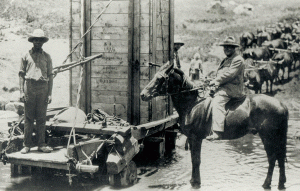
MALIEVELD SPRUIT POWER STATION
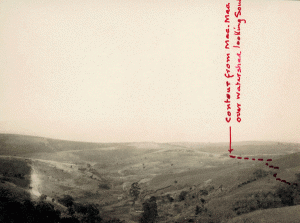
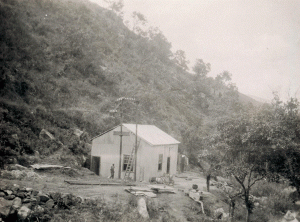
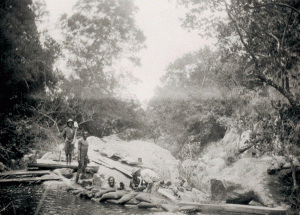
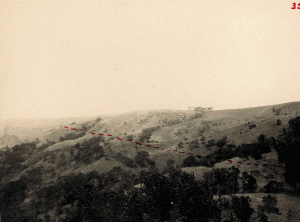
SABIE RIVER IN OPERATION
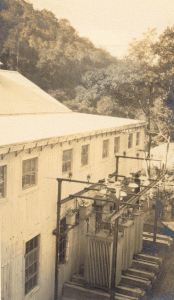
The Sabie River Gorge station was the first station to be designed by ESCOM engineers. The Sabie undertaking was the first project where ESCOM generated its own electricity after its establishment and it was, until the Hendrik Verwoerd Power Station(now known as Gariep) began to generate power in 1971, the only hydro-electric power station erected by ESCOM. The scheme started up provisionally for testing in March 1927 and commercial operation started on 1 April 1928. The licensed supply/delivery area was within a 14 km radius from the Sabie Railway Station. This excluded the areas under jurisdiction of the municipality, unless the Commission obtained permission from the local authorities for the supply of electricity.
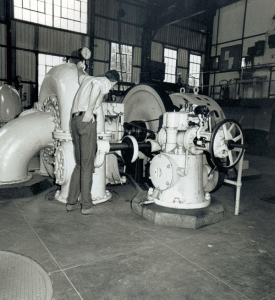
The Sabie Undertaking consisted of :
- a hydro-electric power station in the Sabie River Gorge with an installed capacity of 1.350kW, made up of three generating sets of 450 kW each. Two were initially in production – the third only operating in emergencies – but in 1944 the mining companies requested that all three sets run when sufficient water was available. To enable this a force-air cooling on the step-up transformer at the power station was installed and the mining companies had to provide devices for improving the power factor of their load. Three 55 kW 600 kV 750 rpm Francis turbines and alternators operating under a static head of 64 meters generated electricity. The system of generation was in three phases with 50 cycles, generating 3 300V.
- A 22.000V transmission line, over 11,4km, from the power station to a distribution sub-station near Sabie Township. (Illustration: 1929 Annual Report)
- A 3.300V distribution line, over 3,5km, from the distribution sub-station to the consumers in the Golden Valley area.
- Four step-up and step-down transformers working at the power station with one spare, as well as six working and one spare on the transmission and distribution lines. (Illustration: 1928 Annual Report)
CIVIL WORKS
Division weir and intake works (Illustrations: Annual Reports 1926, 1928)
Sand trap at weir (Illustration: Annual Report 1927)
Settling basin at intake works (Illustration: Annual Report 1928)
Power Station (corrugated iron building) (Illustrations: Annual Reports 1926, 1929: gorge with power station in middle distance, 1930)
Pipe line: 105cm pressure pipe dropping 1542 meters to gorge below (Illustrations: Annual Reports 1926, 1927)
One of the aqueducts (Illustration: Annual Report 1927)/ canals 3891 meters
Tunnels: 13 146 meters
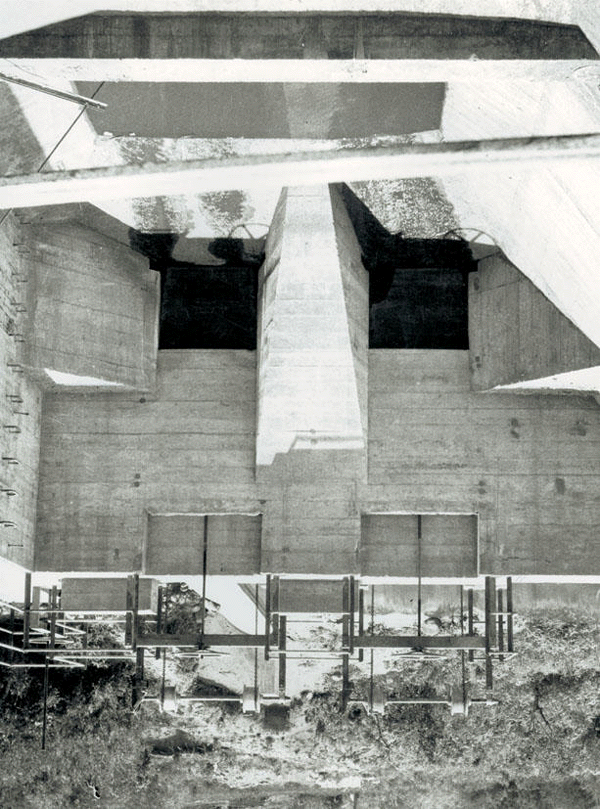
OUTPUT
According to the Annual Report of 1930, the Sabie Undertaking was designed for an output of approximately 5,5 million units per year. Up to 1930 the electricity demand was far less than the maximum output. A yearly increase of +/- 40 % can however be noted from 1928 onwards, and in 1931 the output was exceeded and 6,585 553 million units were sold. As the units sold increased, the average price per unit decreased and the consumers had to pay only 66% of the estimated price. The reason for this is because production costs of hydro-electric schemes are affected only to a limited extent by the output. Any increase in consumer demand has very little impact on the operating expenditure and results in a substantial reduction in the average cost per unit.
The output peaked in 1947 when 7,604 777 units were produced. After 1947 a steady decline in output can be observed, with the exception of 1963 and 1964. The reason for this can be attributed to the fact that the town of Graskop was connected to the Sabie River Gorge scheme. After the closure of the plant on 5 November 1964 a sharp drop in output occurred. By 1967, only 17 000 units were produced. The 1968 Annual Report only mentions that the power station was used as a standby for emergencies. After 1971, with the completion of the Hendrik Verwoerd power station, the Sabie scheme was no longer noted in the Annual Report and also excluded on the map of the Eastern Transvaal Undertaking.
South African Forest Investments, the biggest private forestry company in South Africa, which was founded in 1948, was not dependent on the Sabie River Gorge scheme for it’s power (a saw mill at Graskop drew power from the station from 1963, but there is no indication what the situation was after 1964). The Eastern Transvaal had huge coal deposits and plenty of water, which was ideal for the development of coal-fired power stations. Komati Poort was completed in 1961, followed by Camden, Hendrina, Arnot and Kriel Power Stations. In the sixties a network of transmission lines was also constructed in the Eastern Transvaal, from which the Sabie Area could get its power.
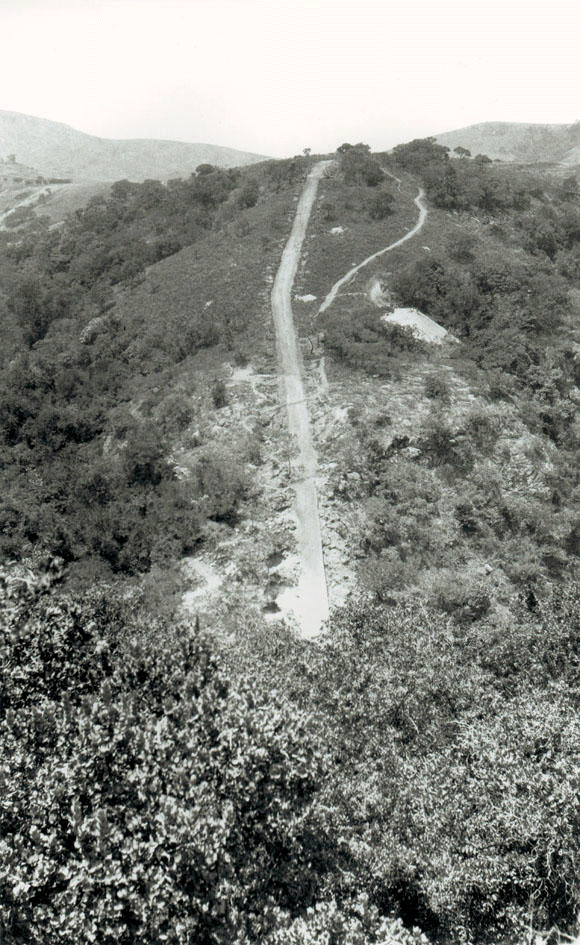
STAFF
Jean Benoit Raoul Martin was born on 15 December 1880 in Port Louis, Mauritius, and came to Pretoria, the capital of the Zuid-Afrikaansche Republiek, in 1893. With the outbreak of the Second Anglo Boer War (1899-1902) he joined General Louis Botha’s forces as a telegraphist with the “Staats Artillerie”. He was captured in 1901 at the Battle of Hlobane, which took place near Vryheid and was sent to the prison camp at Ladysmith, called “Tin Town”. He was sent as POW to Sialkot and Fort Ahmedrager, in the province of Amnitsar, India.
After the war Martin was expatriated to France, where he applied to an international fund in aid of Boers for bursaries in electrical engineering. After having completed his studies, he returned to South Africa in 1930. Up to his retirement in 1962, he was in charge of the Sabie River Gorge Power Station. He moved to Parktown where he died on 6 May 1964 in the Edenvale Hospital, aged 83. He was married to Marie-Antoinette and they had two daughters, Monique Beley and Nicole Monique Jacqueline Franck. No records could be found on the staff situation after his retirement. In the Annual Report of 1946 it is mentioned that a small community was situated at the Power Station, which might indicate that other staff was also employed.
The white community in the Sabie-Pilgrims Rest area at the time consisted on the one hand of an English-speaking community with strong ties with Britain. The Pilgrim’s and Sabie News are filled with reports of cricket matches, Victoria and St George’s day celebrations and Empire pageants. In his book Game and Gold HT Glynn refers to the British Empire as the greatest empire in the world and sees it as his duty to uphold this empire and the Union Jack in this remote part of South Africa.
The Afrikaans-speaking community only started to grow during the depression when the government forestry project was started. According to one of the ministers of the “Nederduits Hervormde Kerk” these people were not only extremely poor, but illiterate as well.
Noting his role the Anglo-Boer War, one can assume that Martin was not pro-British. It would have been interesting to know what social life the Martins lead at Sabie.
| 1920 | A Government Departmental Committee is formed to look into the establishment of a Government Power Station to meet the needs of the numerous small mines in the Sabie District. |
| 1922 | September: The Electricity Act, no. 42 of 1922 is passed. |
| 1923 | 6 March: The Government Gazette announced the establishment of the Electricity Supply Commission (ESCOM) with dr H.J. van der Bijl as chairman. The establishment of a power station in the Sabie District is referred to the Commission as one of urgency. On 7 August, members of the Commission visit the Sabie District to investigate the possibility of the establishment of a power station. Survey work for a hydro-electric station in the Sabie valley is started. |
| 1924 | Construction work is delayed because of a reconsideration of the mines’ power requirements. A site closer to Sabie has to be found to cheapen the cost of the transmission system. In June survey work is started anew on the farm Bergvliet |
| 1925 | On 5 June a permit is obtained from the Electricity Control Board for the establishment of a hydro-electric undertaking, as well as a permit for the necessary water rights on the Sabie River from the Water Court. |
| November: | Owing to the delay in construction of the Sabie River Gorge Power Station, a small hydro-electric plant is installed on the Malieveld Spruit to ensure an adequate power supply to the district during the dry winter season. |
| 1927 | In March the Gorge scheme is started up provisionally for testing. The Sabie river’s water level drops because of a drought, and according to the Annual Report of TGME a Lanz Diesel engine is used to supplement the power supply. In May the Malieveld Station ceases operation. |
| 1928 | On 1 April the Sabie River Gorge Power Station is placed in commercial operation. During the summer, two exceptionally severe hailstorms are experienced, causing considerable damage to the buildings of the power station. On the one occasion the large amount of debris washed down the canal causes an involuntary shutdown of the power station. |
| 1930 | Early in 1930 one of the three mining companies at Sabie discontinues mining activities and goes into liquidation. The two remaining consumers have previously generated a considerable amount of their electricity at a power station of their own. With the closing down of the one mine, they decide to draw all their power from the undertaking, which leads to a large increase in the output of the Sabie River Gorge Power Station, and a subsequent reduction in cost. |
| 1936 | A roadway to the power station is built. |
| 1943 | Due to the war, sales to industry decrease throughout South Africa. The Sabie plant experiences a drop in demand of 6,4%. |
| 1944 | At the request of the mining companies, the third 450 kW set which is kept as standby, is also used when sufficient water is available. For this reason a forced-air cooling system is installed on the step-up transformers at the power station. The waterways, originally designed to convey water for low load on the machines, have to be modified at some points to ensure that the water pressure is sufficient to run an additional generator. The mines abandon the practice of dumping “tailings” (waste left over from some industrial process) into the river, resulting in a cleaner supply of water to the station and the probable prolongation of the life of the wearing parts. |
| 1946 | January: heavy floods are experienced at the power station, but no considerable damage is caused. The floods, however, isolate the community at the power station completely from the village for 48 hours. |
| 1947 | The capital expenditure is paid off, which enables the Commission to sell electricity at a reduced cost. This is in accordance with the Electricity Law, according to which separate bills are kept for each undertaking. |
| 1948 | VFP assets are taken over by ESCOM. H.J.van der Bijl dies in December. Mr A.M.Jacobs is appointed as chairman |
| 1950 | The two gold mines, supplied with power by the Undertaking, amalgamate. The remaining consumer takes the total output at cost. In terms of the Sabielicenceof 1923 the contract is subject to termination by the consumer giving12 months notice. A severe drought is experienced which leads to a decrease of 10,3% in power generation. |
| 1951 | Dr J.T.Hattingh is appointed as chairman |
| 1957 | Notice is given by the Transvaal Gold Mining Estates, Ltd. to terminate the contract on 30 June 1958. |
| 1958 | On 1 July the Sabie River Gorge Power station is incorporated in the Eastern Transvaal Undertaking. Seventy-seven domestic and business consumers and three larger users in the Sabie village are provided with power. |
| 1960 | Major development of coal fired power stations in the Eastern Transvaal is planned. Power stations developed during this decade include Camden, Hendrina, Arnot and Kriel. |
| 1962 | Dr R.L.Straszacker is appointed as chairman A scheme is planned to erect a 21 kV power line between Sabie and Graskop, where 70 residents have accepted ESCOM’s conditions. ESCOM will take over the reticulation system at Graskop and it will be reconstructed to provide power to more consumers, incluqa.www.eskom.co.za/sites/heritage/Pages/1923.aspxding a sawmill. |
| 1963 | The Graskop-Sabie scheme starts operation. In the ESCOM Annual Report mention is made of the Sabie Gorge and Sabie Waterfall Power Stations |
| 1964 | The power station is shut down on 5 November. |
| 1968 | The power station is mentioned as a standby for emergencies. |
| 1971 | The Hendrik Verwoerd Hydro-electric scheme is completed. |
SOURCES
- ESCOM Annual Reports 1924-1971The Megawatt Journals
- ESCOM 50 Years
- Lantern Jaargang xxxxi no 2, 1982.
- The Pilgrim’s and Sabie News 1924-1954.
- Bartman, T. (red.), Die herdenking van die 50ste bestaansjaar van die Nederduits Hervormde Kerk, Sabie.
